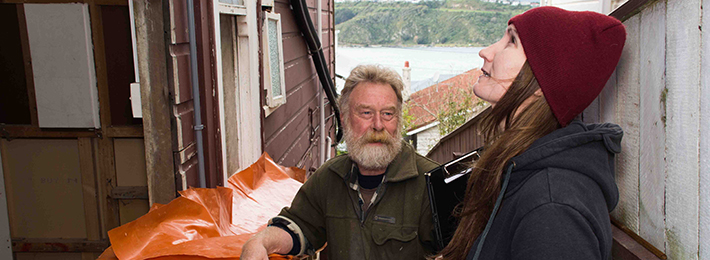Are you suffering from QWS?
15 Jun 2017, Business Tips, Featured, Prove Your Know How

Most builders I know don’t like waiting, whether it is for subbies or suppliers; however, waiting for a client to respond a quote has to be the worst. It might be less stressful if you thought your quotes were likely to be accepted…
I call it Quote Wait Syndrome (QWS) and I’m sure it’s a feeling familiar to many of you. Unfortunately, it’s impossible to force your clients to buy what you think they should (although some tradies try really hard to do this).
It’s also impossible to get them to pay what you think they should for the work they do want (and many tradies attempt this one). However, it is possible to greatly improve the chances of getting a positive response if you start out correctly from the very first meeting.
Here are four things you can do that will greatly improve your ability to win the quoting game and reduce your QWS!
1) Work harder on the estimate
I wish I could be paid a dollar every time a quote is rejected for the reason that it’s “way more than we expected”. The client thinks $300,000, but the cheapest quote is $380,000!
In this instance, everyone loses. Ever had this happen to you?
It happens because no one really knows how much a project is going to cost until after it has been carefully quantity surveyed, priced and finally built.
If you are building new units or homes with similar dimensions, then you will know exactly how much the new build is going to cost. This gives you an advantage, as you can quote a definite price right up front, excluding a few variables.
This level of detail isn’t possible when quoting for renovations and additions, but most customers still want to know how much it is going to cost.
To avoid disappointment for yourself and your client, spend sufficient time working out a rough estimate before you start the serious design/quoting process.
Don’t proceed until you have settled on a really good indication of what you believe the initial proposals are going to cost, otherwise you’re wasting your and your subbies’ time by quoting something that is not going to be built.
This way, you can rest assured that when your quotes are presented they are not going to be rejected because they are way over the top.
2) Be pessimistic
Always, always, always add more to your initial rough estimates than you think your clients can handle.
I’ve never heard of a renovation that has not exceeded the initial estimate. Things are discovered and added along the way, so the final price is almost always well above.
For some clients it doesn’t matter – those who were referred to you and for whom price is not really the issue – however, for price-conscious clients, your rough estimate will sound like a fixed price no matter how much you tell them otherwise. That first number is the one that sticks. So make sure that you add heaps to your initial rough estimate.
A good idea is to back-cost several renovations and compare your initial rough estimate with the finished cost. Use this as a guide. That way your rough estimates are likely to be closer to the actual finished cost.
If you allow for variations and extras in your initial rough estimate, then once the design is done your quote is less likely to cause surprise.
3) Work the budget
Once you have a good ‘worst-case’ estimate, ask your client if that’s what they had in mind. If so, then you can proceed safely.
If it is too high, then you need to revisit what they are asking you to do. Don’t move onto the ‘firm’ estimate or quote stage until you have a really good agreement on a rough estimate.
If they are not ready to talk about their budget, then ask: “If we were to come back to you with a firm estimate/quote for around this amount, would you be happy to proceed with us?”
The truth is that your clients will likely have no idea of actual renovation costs, so getting them to face the reality early will improve the likelihood of them accepting your quote.
4) Tell stories
Now I can hear you ask: “if they knew the actual finished cost, they might not even start”, or “someone will come along and give a really low ball park figure and they will go with it. How can we compete?” This is a very real dilemma.
Don’t compete, tell stories.
If you have cases where a client has gone with a cheap quote, but ended up paying more, then go back to the client, find out how much they actually paid, and compare that with what they would’ve paid if they had signed with you.
Get them to tell you how they felt when the costs kept climbing and climbing. If you don’t have your own stories, ask some of your colleagues.
Get together a set of real stories that show what happens when costs are not estimated carefully at the beginning. Make sure that you get the facts straight and stick with them. Don’t malign the builder who estimated cheap and cost heaps. He may have just had no idea!
The idea is to demonstrate how failure to estimate/quote carefully at the beginning can lead to a disappointing outcome. It takes time to do this with your client, but if they get a true indication of the likely price of their project at the beginning, there is less chance your quote will be rejected for the ‘cheapie’.
Follow these steps and you are likely to reduce your Quote Wait Syndrome!
Register to earn LBP Points Sign in
1 Comment
Leave a Reply
You must be logged in to post a comment.




pricing can be taxing